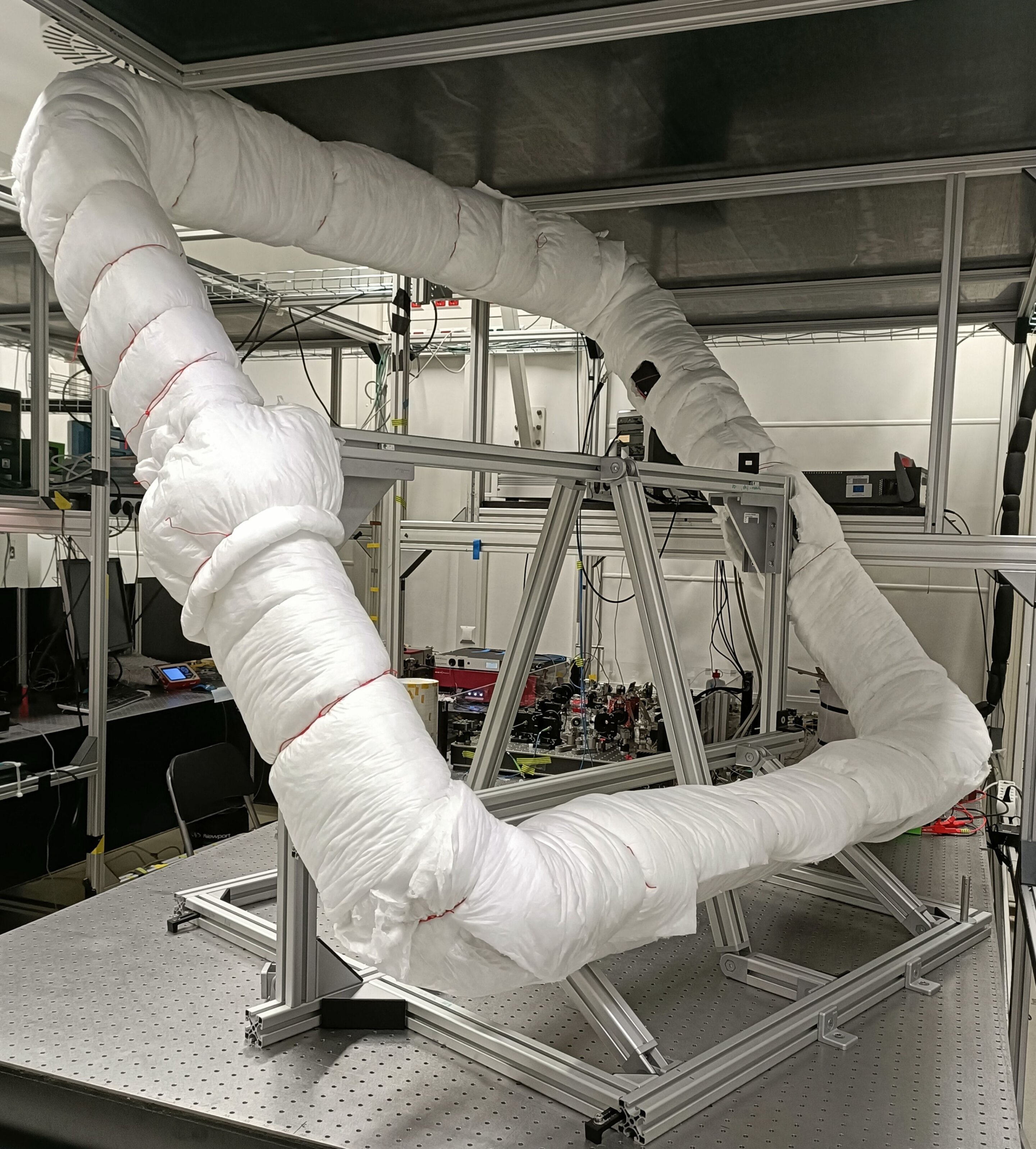A group of physicists was able to produce a measurement of the Earth’s rotation employing photons – the particles of light – experiencing a peculiar quantum phenomenon called entanglement. This allows them to push the precision of the measurement up 1,000 times, and it could be used to explore questions of fundamental physics.
You might be wondering why this had not been employed before. The answer is that quantum entanglement is a very delicate state. Two particles are entangled and they suddenly belong to a single state. No matter how far apart they are, interaction with one will affect the other – but the state can be disturbed and the particles go back all unconnected.
A way to measure rotations using light is with an instrument called the Sagnac interferometer. Light is sent through a loop in opposite directions, and due to the rotation of the system, one side will get back to the beginning at different times. If the light in question is a pair of entangled photons going in opposite directions, something very peculiar happens. It is like sending the same light in both directions at the same time and the time delay between the two doubles.
To take advantage of this property called, super-resolution, researchers at the University of Vienna sent entangled photons through a 2-kilometer (1.24-mile) long fiber optic organized in a loop. They were able to keep the noise of the system low and stable for several hours, allowing entangled photons to survive the journey through it.
Such a device is made to actively measure rotation, and there is a source of rotation underneath our feet. The Earth. This device finally brings quantum mechanics to a level of sensitivity that was achieved only with standard non-entangled light before.
“That represents a significant milestone since, a century after the first observation of Earth’s rotation with light, the entanglement of individual quanta of light has finally entered the same sensitivity regimes,” co-author Haocun Yu, who worked on this experiment as a Marie-Curie Postdoctoral Fellow, said in a statement.
But actually, measuring the Earth’s rotation was not the goal of this device. The Sagnac interferometer is designed as a way to precisely measure the rotation of systems independently of the Earth’s spinning. For this reason, the team had to find a way to isolate the rotation that comes from being on a spinning planet.

The Sagnac interferometer in the experiment. Two kilometers (1.24 miles) of optical fibers are coiled around a 1.4-meter sided square aluminum frame.
Image credit: Raffaele Silvestri
“The core of the matter lays in establishing a reference point for our measurement, where light remains unaffected by Earth’s rotational effect. Given our inability to halt [Earth] from spinning, we devised a workaround: splitting the optical fiber into two equal-length coils and connecting them via an optical switch,” lead author Raffaele Silvestri explained.
This solution, which essentially boiled down to having a switch on the apparatus, allowed them to cancel out the rotational signal of the Earth. “We have basically tricked the light into thinking it’s in a non-rotating universe,” continued Silvestri.
The breakthrough is the first step into a new way to measure rotation, and not just that; the researchers have great expectations for possible future applications.
“I believe our result and methodology will set the ground to further improvements in the rotation sensitivity of entanglement-based sensors. This could open the way for future experiments testing the behavior of quantum entanglement through the curves of spacetime,” added senior author Philip Walther.
The study is published in the journal Science Advances.
Source Link: Quantum Entanglement Used To Measure Earth’s Rotation For The First Time